Ovulation tests can take some of the guesswork out of family planning, but can they tell you if you’re already pregnant? Here’s what you need to know.
-
Tracking cycle
-
Getting pregnant
-
Pregnancy
-
Help Center
-
Flo for Partners
-
Anonymous Mode
-
Flo app reviews
-
Flo Premium New
-
Secret Chats New
-
Symptom Checker New
-
Your cycle
-
Health 360°
-
Getting pregnant
-
Pregnancy
-
Being a mom
-
LGBTQ+
-
Quizzes
-
Ovulation calculator
-
hCG calculator
-
Pregnancy test calculator
-
Menstrual cycle calculator
-
Period calculator
-
Implantation calculator
-
Pregnancy weeks to months calculator
-
Pregnancy due date calculator
-
IVF and FET due date calculator
-
Due date calculator by ultrasound
-
Medical Affairs
-
Science & Research
-
Pass It On Project New
-
Privacy Portal
-
Press Center
-
Flo Accuracy
-
Careers
-
Contact Us
Will my ovulation test be positive if I’m pregnant?
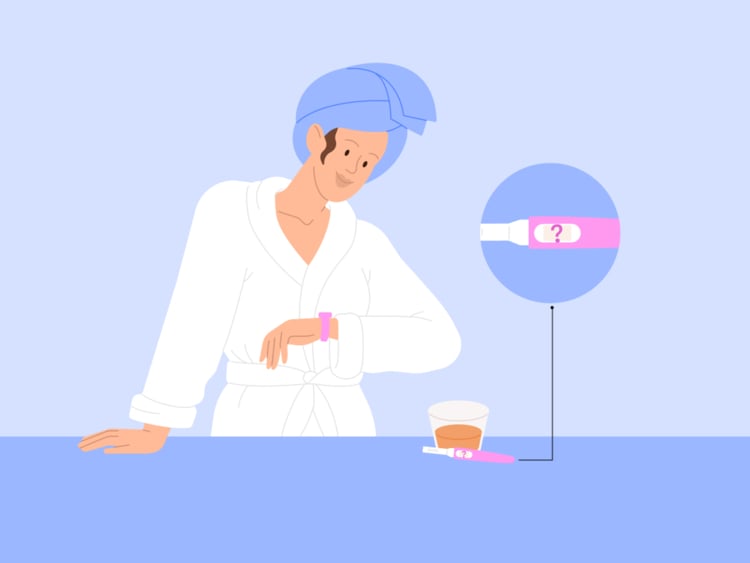

Every piece of content at Flo Health adheres to the highest editorial standards for language, style, and medical accuracy. To learn what we do to deliver the best health and lifestyle insights to you, check out our content review principles.
For some people, trying to conceive can come with a little forward planning. This might not sound like the sexiest thing in the world, but knowing when your fertile window is can help you better understand when to have conception sex. One way to do this is to track your menstrual cycle, and another is to use ovulation tests.
Simply put, ovulation tests can take some of the guesswork out of when to have sex to get pregnant by flagging when one of your ovaries is about to release an egg. This is the point in your cycle when you’re most fertile. But if your ovulation test comes back positive, could it also mean you’re pregnant? With the help of a Flo expert, let’s dig into how ovulation tests work, when to take them, and if they can indicate that you’re pregnant.
Key takeaways
- It’s so important to remember that a positive ovulation test does not mean you are pregnant. Pregnancy tests and ovulation tests work quite differently and should be taken at different times for the most accurate results.
- An ovulation test can tell you if one of your ovaries is about to release an egg. This can be useful if you are trying to have a baby.
- Ovulation tests work by detecting levels of a hormone called luteinizing hormone (LH) in your urine. The amount of LH in your system sharply rises around 36 hours before you ovulate, a telltale sign you’re about to release an egg.
- While ovulation tests can be around 99% effective, they can give a false positive.
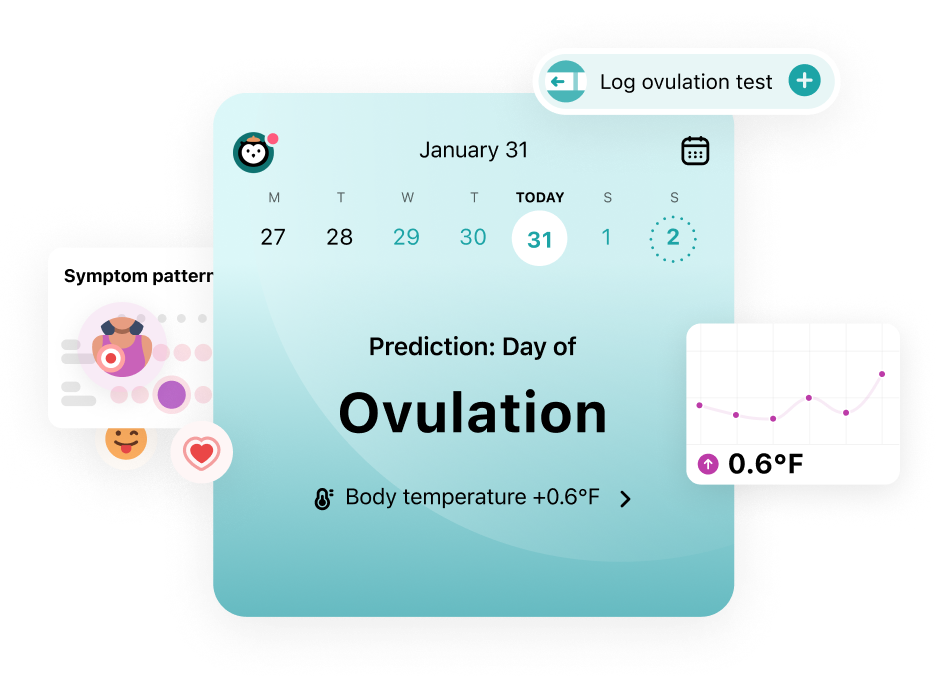
 Over
7.8M
ratings averaging
4.8/5
*
Over
7.8M
ratings averaging
4.8/5
*
Understand your fertility better with the Flo app
- Learn more about your fertility signals
- Improve ovulation predictions by tracking temperature via Apple Watch
- Log your ovulation test results
 Over
7.8M
ratings averaging
4.8/5
*
Over
7.8M
ratings averaging
4.8/5
*
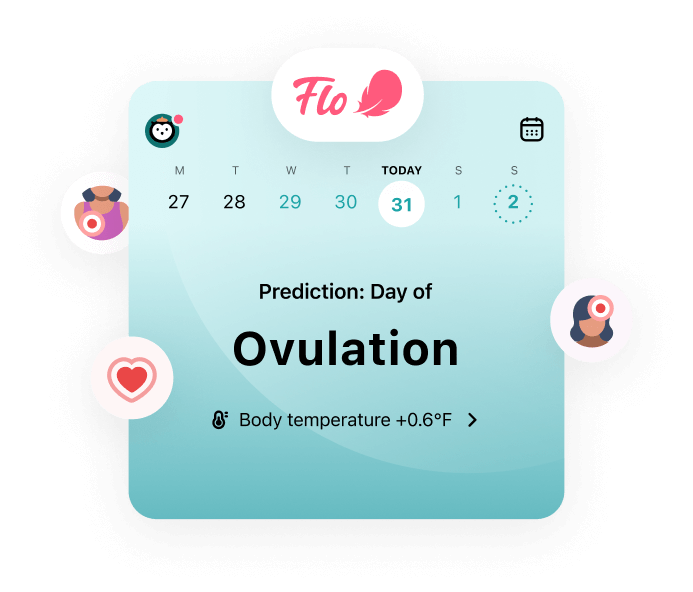
Trying to conceive?
The Flo app can help you better understand your fertility

 Over
7.8M
ratings averaging
4.8/5
*
Over
7.8M
ratings averaging
4.8/5
*
Understand your fertility better with the Flo app
- Learn more about your fertility signals
- Improve ovulation predictions by tracking temperature via Apple Watch
- Log your ovulation test results
Can an ovulation test detect early pregnancy?
In short, yes. It’s really important to note that ovulation tests and pregnancy tests aren’t the same things (and shouldn’t be used interchangeably). However, Dr. Jenna Beckham, obstetrician, gynecologist, and complex family planning specialist, WakeMed Health and Hospitals, Planned Parenthood South Atlantic, North Carolina, US, on Flo’s expert board, says: “While an ovulation test is not designed to detect pregnancy, you can get a false positive if you take an ovulation test when you are in fact pregnant.”
This can be attributed to the fact that the hormone that an ovulation test looks for is chemically similar to the one detected by a pregnancy test. So, an ovulation test can misread these hormones and test positive in response to heightened levels of the hormone that is produced during pregnancy. We’ll have more on those hormones later!
But — and this is key — a positive ovulation test does not mean you’re pregnant. The only way to be sure if you’re pregnant is to take a pregnancy test.
Take a quiz
Find out what you can do with our Health Assistant
What’s the difference between a pregnancy test and an ovulation test?
Both ovulation and pregnancy tests have one big similarity: They both involve peeing onto a stick. But there is one key difference. An ovulation test, also known as an ovulation predictor kit, is looking for a surge in luteinizing hormone (LH), while a pregnancy test is looking for a hormone called human chorionic gonadotropin (hCG).
Put simply, an ovulation test lets you know when your ovary is about to release an egg (and, therefore, when to have sex if you’d like to become pregnant). In contrast, a pregnancy test tells you if you’ve gotten pregnant this cycle after ovulation.
Why are ovulation tests sometimes positive if you’re pregnant?
Although an ovulation test is looking for an increase in luteinizing hormone (LH), it can misread this with hCG, which is produced during pregnancy. This can happen because both hormones are chemically similar. If you are already pregnant when you take an ovulation test and you don’t know it yet, your test may pick up increased levels of hCG instead of LH.
Dr. Beckam explains. “The protein components of hCG and LH look very similar, so an ovulation test is unable to distinguish between these two hormones in the urine.”
Again, it’s important to note that a positive ovulation test does not mean you are pregnant, just as a negative one doesn’t mean you aren’t. If you’ve missed a period, had pregnancy symptoms, or think you could be pregnant, it’s always best to wait until the first day of a late or missed period and then take a pregnancy test.
How are the hormones LH and hCG different?
While the hormones LH and hCG are chemically similar, they play different roles in your menstrual cycle.
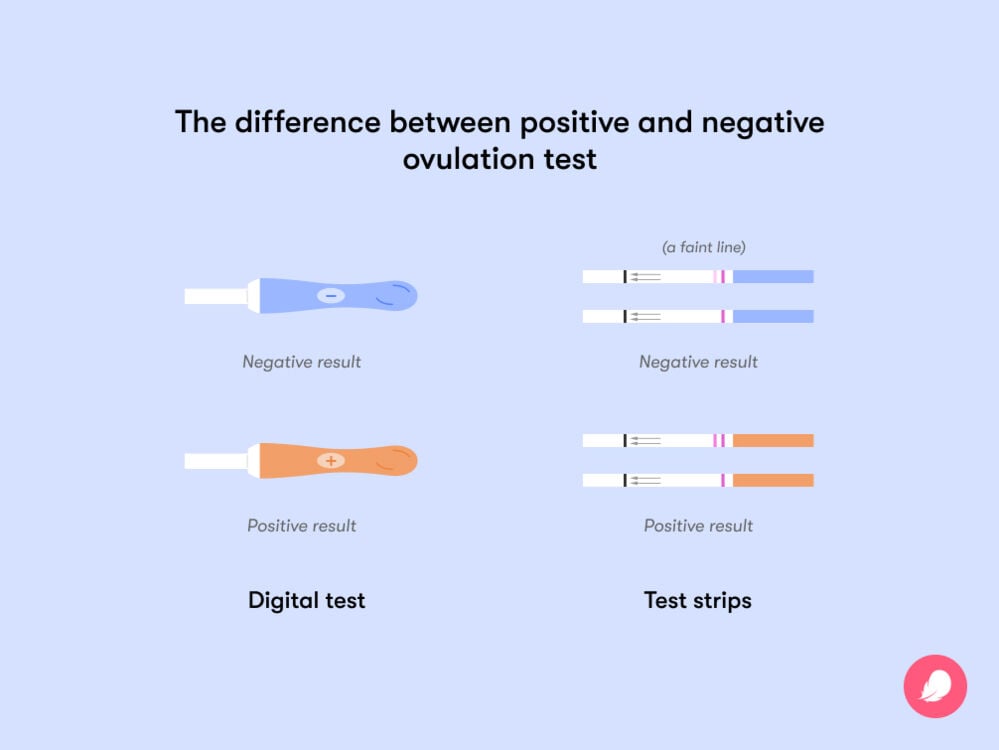
LH is the hormone that signals to your ovary to release an egg, the process known as ovulation. Once released, the egg travels down one of your fallopian tubes where, if it meets sperm, it can be fertilized. This fertilized egg may then enter the uterus and implant itself into the lining, marking the start of pregnancy. If the egg isn’t fertilized, it disintegrates and sheds through your vagina with your uterine lining: This is your period.
The hormone hCG, on the other hand, is produced when you are already pregnant. It’s first released by your fertilized egg (known as an embryo). Once the embryo is developed, hCG production is taken over by an organ called the placenta. This is a whole new organ that forms during pregnancy in your uterus to support you and your growing baby. The placenta plays an important role in pregnancy by triggering the body to produce more estrogen and progesterone (two more hormones). Collectively, these three hormones help maintain the lining of the uterus to support a developing embryo and signal the body to stop menstruating.
When should I take an ovulation test?
Since ovulation tests and pregnancy tests have very different jobs, you should take them at different times. It can be handy to have a general idea of when ovulation might happen for you so you can get a little bit of a guide.
This can take some trial and error, and an ovulation-tracking app like Flo may help. The average menstrual cycle is around 28 days, and ovulation can happen at the midpoint, around day 14. However, cycles can vary. Everyone is different, and if yours is between 21 and 35 days, then it’ll still be considered to be typical.
“The majority of people ovulate between days 12 to 17 of their menstrual cycle,” explains Dr. Beckham. “This can vary from one cycle to the next and from person to person. Using a period tracker can help you get an idea of when you ovulate.” Dr. Beckham also advises, “It is also best to take the ovulation test first thing in the morning. This is because this is likely when your urine will be most concentrated, so the LH level will be easier to detect.”
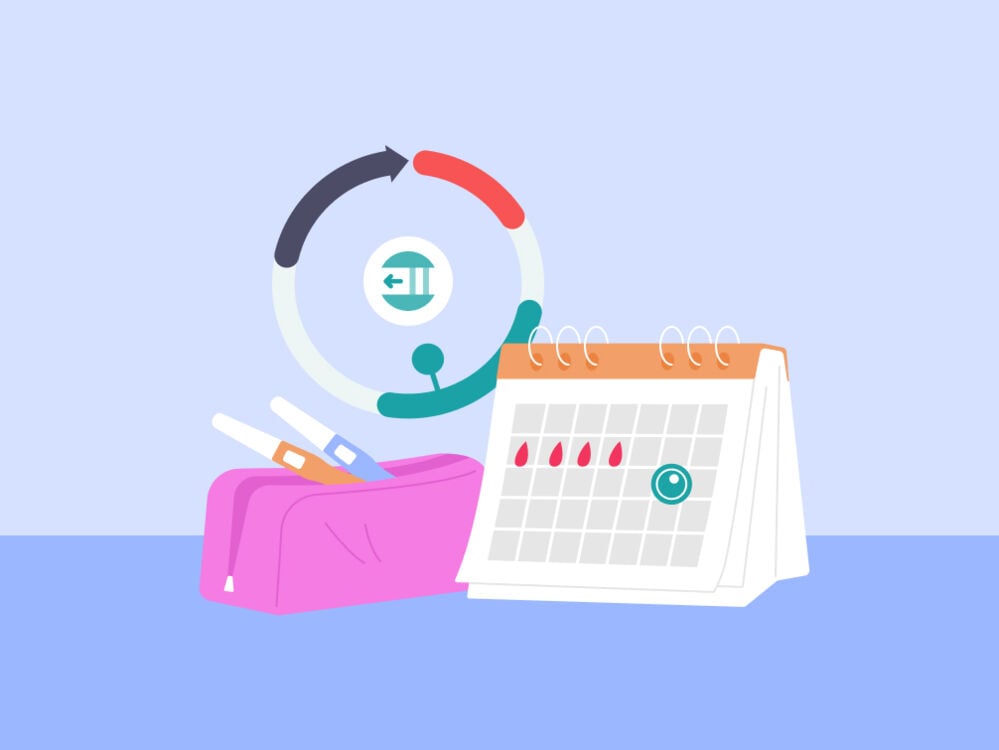
You can take ovulation tests every day for the four days before your predicted ovulation day — which, of course, will vary depending on the length of your cycle (and, possibly, from one cycle to the next). Dr. Beckham recommends testing starting from day 10 of your cycle. This way, she says, “most people should catch their LH surge.”
The time frame just before, during, and after ovulation is known as your fertile window and is the best time to have sex if you’re trying to get pregnant. This is because an egg released during ovulation can remain for 12 to 24 hours, while sperm can survive for up to five days in your fallopian tubes after sex — so it can fertilize an egg anytime during that window.
Track your cycle
The best way to know what’s going on with your menstrual cycle is to track it. Alongside Flo’s period tracker, Flo’s ovulation calculator and pregnancy test calculator can help you determine when it’s the best time to take an ovulation test versus a pregnancy test. You can also log any symptoms you have and get daily personalized insights.
In addition to doing an ovulation test or using a tracker, there are other ways to track ovulation:
- Basal body temperature (BBT): Your basal body temperature is the temperature of your body when you’re completely at rest. Your BBT increases very slightly during ovulation (usually by about 0.5ºF to 1ºF). You can measure your basal body temperature by using a specialized digital thermometer every morning as soon as you wake up. By logging your temperature every day for several months, you can get an idea of which day it starts to increase during your cycle.
- Cervical mucus: Your cervical mucus can become slippery and clear (kind of like egg whites) just before ovulation.
Lastly, if you have irregular periods and cycles, it can be hard to predict when you’re ovulating. In some cases, irregular periods can be a sign of a condition like polycystic ovary syndrome (PCOS), which affects around 8% to 13% of reproductive-aged women. It can prevent ovulation from happening regularly. While there is no cure for PCOS, the symptoms can be effectively treated. The best thing to do if you have irregular periods is to speak to your doctor, who will be able to figure out the best next step for you.
More frequently asked questions about whether an ovulation test will be positive if pregnant
Will an ovulation test be positive during pregnancy?
This is possible if the ovulation test gives a false positive in response to the presence of hCG. As Dr. Beckham explains: “If an ovulation test is positive due to ovulation, this should only last for a day or two. LH will peak during ovulation and then decrease, usually within a few days. So if an ovulation test remains positive for days, this could be a sign that it is detecting hCG instead.”


Hey, I'm Anique
I started using Flo app to track my period and ovulation because we wanted to have a baby.


The Flo app helped me learn about my body and spot ovulation signs during our conception journey.


I vividly
remember the day
that we switched
Flo into
Pregnancy Mode — it was
such a special
moment.
Real stories, real results
Learn how the Flo app became an amazing cheerleader for us on our conception journey.
References
“Calculating Your Monthly Fertility Window.” Johns Hopkins Medicine, www.hopkinsmedicine.org/health/wellness-and-prevention/calculating-your-monthly-fertility-window. Accessed 25 Nov. 2024.
Choi, Janet, and Johan Smitz. “Luteinizing Hormone and Human Chorionic Gonadotropin: Distinguishing Unique Physiologic Roles.” Gynecological Endocrinology, vol. 30, no. 3, Mar. 2014, pp. 174–81, doi:10.3109/09513590.2013.859670.
“Fertility Awareness-Based Methods of Family Planning.” The American College of Obstetricians and Gynecologists, Jan. 2019, www.acog.org/womens-health/faqs/fertility-awareness-based-methods-of-family-planning.
“Human Chorionic Gonadotropin.” Cleveland Clinic, my.clevelandclinic.org/health/articles/22489-human-chorionic-gonadotropin. Accessed 25 Nov. 2024.
“Luteinizing Hormone.” Cleveland Clinic, my.clevelandclinic.org/health/body/22255-luteinizing-hormone. Accessed 25 Nov. 2024.
“Menstrual Cycle.” Cleveland Clinic, my.clevelandclinic.org/health/articles/10132-menstrual-cycle. Accessed 25 Nov. 2024.
“Ovulation.” Cleveland Clinic, my.clevelandclinic.org/health/articles/23439-ovulation. Accessed 25 Nov. 2024.
“Ovulation Home Test.” MedlinePlus, medlineplus.gov/ency/article/007062.htm. Accessed 25 Nov. 2024.
“Placenta.” Cleveland Clinic, my.clevelandclinic.org/health/body/22337-placenta. Accessed 25 Nov. 2024.
“Pregnancy: Identifying Fertile Days.” MedlinePlus, medlineplus.gov/ency/article/007015.htm. Accessed 25 Nov. 2024.
“Pregnancy Tests.” Cleveland Clinic, my.clevelandclinic.org/health/diagnostics/9703-pregnancy-tests. Accessed 25 Nov. 2024.
Reed, Beverly G., and Bruce R. Carr. “The Normal Menstrual Cycle and the Control of Ovulation.” Endotext, edited by K. R. Feingold et al., MDText.com, 2000, www.ncbi.nlm.nih.gov/books/NBK279054.
Soumpasis, I., et al. “Real-Life Insights on Menstrual Cycles and Ovulation Using Big Data.” Human Reproduction Open, vol. 2020, no. 2, Apr. 2020, doi:10.1093/hropen/hoaa011.
“How Long Do Sperm Live after Ejaculation?” Mayo Clinic, 5 May 2022, www.mayoclinic.org/healthy-lifestyle/getting-pregnant/expert-answers/pregnancy/faq-20058504.
Witt, Barry. “Trying to Get Pregnant? Here’s When to Have Sex.” The American College of Obstetricians and Gynecologists, Aug. 2023, www.acog.org/womens-health/experts-and-stories/the-latest/trying-to-get-pregnant-heres-when-to-have-sex.
“Using Ovulation Tools to Predict Fertility.” Mayo Clinic Health System, 13 June 2023, www.mayoclinichealthsystem.org/hometown-health/speaking-of-health/using-ovulation-kits-to-predict-fertility.
History of updates
Current version (19 December 2024)
Published (19 December 2024)
In this article
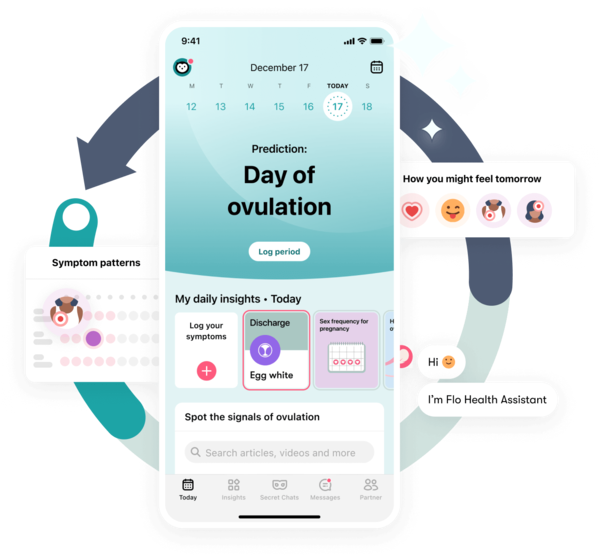
Get your personal guide to fertility
-
Learn how to read your body's ovulation signals
-
Find daily conception tips from our experts
-
Chat with others who are trying to get pregnant




